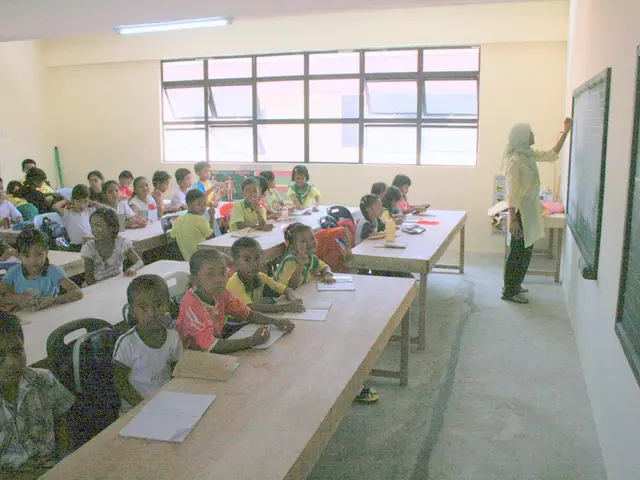Tech-driven aspirations of the country necessitate a strong foundation of research and development, along with skilled professionals.
In the rapidly evolving world of technology, Vietnam is making significant strides towards becoming a high-tech powerhouse. However, challenges remain in the realm of skills development and education.
According to a recent report by the World Bank, fewer than one-third of workers hold formal degrees or certificates as of Q2 in 2025. This statistic highlights the need for a broader and growing pipeline of STEM graduates to meet the demands of the labor market. Achieving Vietnam's high-tech ambitions and high-income status by 2045 requires a strong focus on STEM education.
The launch of the Vietnam Semiconductor Industrial Resources Development Alliance demonstrates the importance of multi-stakeholder coordination in advancing skills development in the sector. This alliance aims to strengthen partnerships between industry and training systems to close skills gaps and meet labor market demands.
However, a declining share of tertiary-educated workers are employed in jobs aligned with their qualifications. This mismatch between education and employment is a concern, as the economy's capacity to absorb high-skilled workers remains limited. Only around one in 10 workers in high-skilled occupations were reported in 2024.
To address this issue, stronger partnerships between industry and training systems are needed. These partnerships could help in tailoring education and training programs to meet the specific needs of the labor market, thereby reducing the skills gap.
The World Bank's report also emphasizes the need for a skilled talent base to support and accelerate Vietnam's innovation ecosystem. High-tech ambitions are crucial for transforming Vietnam's export-led growth model towards higher value-added sectors, such as advanced manufacturing and innovation-driven services.
Vietnam's booming electronics exports have made the country one of the world's top electronics manufacturing hubs, reflecting a strong manufacturing base. However, the report suggests that Vietnam mainly partakes in labor-intensive downstream activities and provides only some simpler chip design support services, with sophisticated steps being done abroad.
Employers and enterprises are key actors in skills development, with enterprise-based training common in manufacturing sectors such as electronics, textiles, and garments. Pro-employment macroeconomic and labor market policies are central to expand decent work opportunities in higher value-added activities and sectors for all women and men.
The international organization that proposed increasing investments in research and development (R&D) in Vietnam in its report on the development of high-tech talent was highlighted during the "Vietnam Research and Development Forum 2025," an international conference held in Ninh Binh from July 30 to August 1, 2025. The forum focused on promoting Vietnam's future through strategic investments in R&D.
Strengthening labor market governance through social dialogue, modern industrial relations, adequate wage-setting, and rights-based institutions aligned with international labor standards are vital for Vietnam's inclusive and sustainable development.
However, few firms in Vietnam conduct significant in-house innovation, and the private sector has yet to emerge as a major driver of innovation. Private sector R&D remains thin in Vietnam, with related spending by enterprises equaling only 0.2% of GDP. Vietnam lacks a major science and technology cluster of global significance due to low R&D investment levels.
To address this, the report suggests raising public and private R&D spending in Vietnam to complement broader business enabling reforms. This increased investment could help Vietnam close the high education and R&D investment gaps compared to regional leaders, where total R&D spending currently stands at 0.5% of GDP.
In conclusion, Vietnam is making significant strides towards becoming a high-tech powerhouse, but challenges remain in the realm of skills development and education. By strengthening partnerships between industry and training systems, raising R&D spending, and implementing pro-employment policies, Vietnam can bridge the skills gap and foster a more robust high-tech talent base.
Read also:
- Clash of LPR and GERD: What Sets Them Apart and What They Share
- On Thursday, Meta introduced three new smart glasses and LibreOffice made its way into the Austrian military
- Sara Walker and the Writer Discuss Life's Definition
- Europe Witnesses Seven Showcases of Safely Assimilating Autonomous Aerial Vehicles






